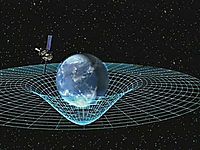
Photo from wikipedia
This brief studies how mutual synchronization of oscillators can be achieved for cross-coupling time delays much larger than the period of the oscillations. Using the closed loop transfer function for… Click to show full abstract
This brief studies how mutual synchronization of oscillators can be achieved for cross-coupling time delays much larger than the period of the oscillations. Using the closed loop transfer function for a system of two mutually delay-coupled phase-locked loops (PLLs) and applying the Nyquist stability criterion, the critical time delay for which stable in- and anti-phase synchronized states become unstable is calculated. The analysis reveals the range of feed-forward loop gains for a given time delay value so that stable in- or anti-phase synchronized states can exist. These theoretical predictions are then verified by measurements with PLLs operating at 24GHz and for cross-coupling time delays ranging from the nano- to the microseconds domain. Such delays are equivalent to coupling at distances of up to 500m. The experimental results show a good agreement with the theoretical predictions. Hence, this brief shows how to setup a network of mutually delay-coupled PLLs and achieve stable synchronized states for a given time delay.
Journal Title: IEEE Transactions on Circuits and Systems II: Express Briefs
Year Published: 2022
Link to full text (if available)
Share on Social Media: Sign Up to like & get
recommendations!